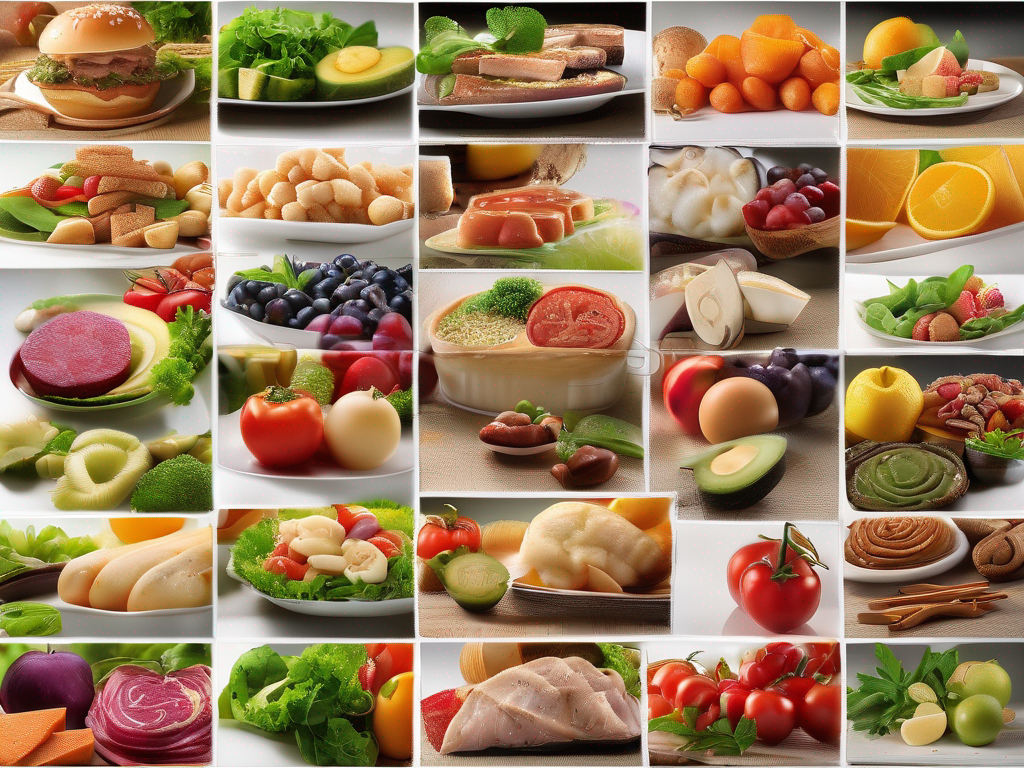
Understanding Food Shelf Life: A Comprehensive Guide
Get Your Free Food Safety Cheat Sheet
30 most common foods with instant answers. Print it and stick it on your fridge—completely free!
Understanding Food Shelf Life: A Comprehensive Guide
In the world of food safety, understanding the shelf life of various food items is crucial to maintaining a healthy and safe kitchen environment. Knowing how long different foods can be stored before they spoil helps prevent foodborne illnesses and reduces food waste. In this comprehensive guide, we will delve into the factors that affect food shelf life, tips for proper storage, and common misconceptions.
Factors Affecting Food Shelf Life
Food shelf life is influenced by various factors, including:
1. Type of Food
Different types of foods have varying shelf lives. Perishable items such as dairy products, meats, and fresh produce have shorter shelf lives compared to non-perishable items like canned goods and dried grains.
2. Packaging
The type of packaging used can significantly impact the shelf life of food. Proper packaging helps protect food from moisture, air, and light, which can cause food to spoil quickly.
3. Storage Conditions
Proper storage conditions, such as temperature and humidity levels, play a vital role in extending the shelf life of food items. Storing food in the refrigerator, freezer, or pantry according to recommendations can help prevent spoilage.
4. Microbial Activity
Microorganisms such as bacteria, yeast, and mold can cause food spoilage. Understanding how microbial activity affects food shelf life is essential for food safety.
5. Processing Methods
The way food is processed and preserved can impact its shelf life. Techniques such as canning, freezing, and drying help extend the shelf life of perishable foods.
Tips for Proper Food Storage
Proper food storage is key to maintaining food quality and safety. Here are some tips to help you maximize the shelf life of your food items:
1. Refrigeration
- Keep your refrigerator temperature at 40°F (4°C) or below to slow down bacterial growth.
- Store perishable items such as meat, dairy, and eggs in the refrigerator to prevent spoilage.
- Use airtight containers or wraps to store leftovers in the refrigerator.
2. Freezing
- Freeze foods that you won't use immediately to extend their shelf life.
- Properly label and date frozen foods to ensure you use them before they lose quality.
3. Pantry Storage
- Store canned goods in a cool, dark place to maintain their quality.
- Rotate pantry items regularly to use older items first and prevent food waste.
4. Proper Packaging
- Use airtight containers, resealable bags, or vacuum sealers to store food items.
- Avoid exposing food to air, as it can accelerate spoilage.
Common Misconceptions About Food Shelf Life
1. "Best By" Dates
Many people confuse "best by" dates with expiration dates. "Best by" dates indicate the manufacturer's recommendation for peak quality, not safety. Foods can often be consumed past the "best by" date if stored properly.
2. Moldy Bread
While mold on bread is a common occurrence, it doesn't mean the entire loaf is spoiled. You can safely remove the moldy section and still consume the rest of the bread if it looks and smells fine.
3. Expiration Dates
Expiration dates on food products are not always set in stone. In many cases, foods can still be safe to eat past the expiration date if they have been stored properly.
Conclusion
Understanding food shelf life is essential for maintaining a safe and healthy kitchen. By considering factors such as food type, packaging, storage conditions, and microbial activity, you can prolong the shelf life of your food items and reduce food waste. Proper storage practices, such as refrigeration, freezing, and pantry storage, play a crucial role in ensuring food safety. Remember to always check for signs of spoilage before consuming any food item and follow recommended storage guidelines to make the most of your food's shelf life.
Authoritative Food Safety References
These agencies and university labs inform every tip and health precaution we publish.
USDA FoodKeeper – Cold Storage Guidelines
Official refrigerator, freezer, and pantry timelines maintained by the U.S. Department of Agriculture.
Visit USDA FoodKeeperFDA Produce Safety Rule & Grower Guidance
Field-to-fridge handling practices that prevent contamination of fruits, vegetables, and leafy greens.
Visit FDA Produce SafetyCDC Foodborne Illness Prevention Hub
Surveillance-backed guidance on pathogens, symptoms, and steps to reduce foodborne illness risk.
Visit CDC Food SafetyUC Davis Postharvest Technology Center
University research detailing optimal storage atmospheres for produce after harvest.
Visit UC Davis PostharvestPenn State Extension – Home Food Preservation & Safety
Peer-reviewed extension bulletins on safe canning, chilling, and reheating practices.
Visit Penn State ExtensionGet Your Free Food Safety Cheat Sheet
30 most common foods with instant answers. Print it and stick it on your fridge—completely free! Want more? Upgrade to the complete guide with 70+ foods.
Scan your food directly and get instant safety info using our AI-powered camera feature.